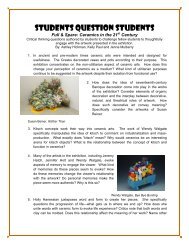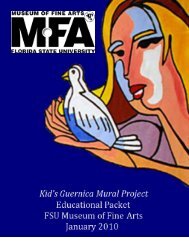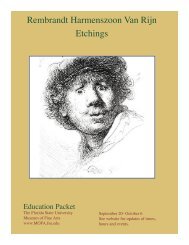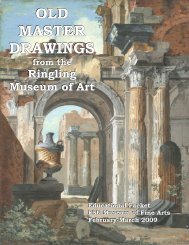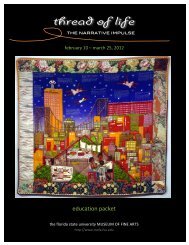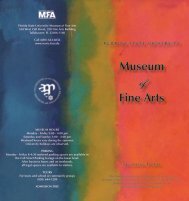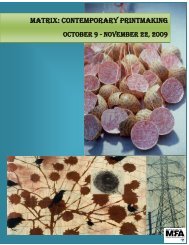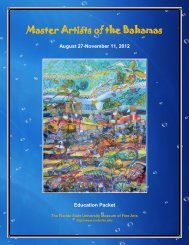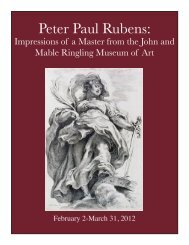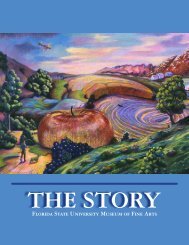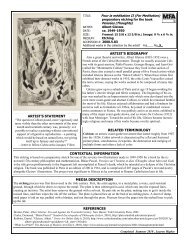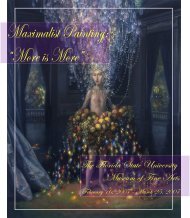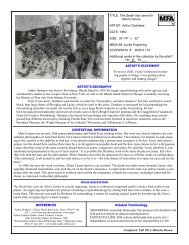Friedl Dicker-Brandeis and Ela Weissberger at Terezin
Friedl Dicker-Brandeis and Ela Weissberger at Terezin
Friedl Dicker-Brandeis and Ela Weissberger at Terezin
- No tags were found...
You also want an ePaper? Increase the reach of your titles
YUMPU automatically turns print PDFs into web optimized ePapers that Google loves.
Descriptive PoetryBy: Brooke ShawEnduring Idea:Through art, neg<strong>at</strong>ive human behaviors <strong>and</strong> their effects (prejudice, racism, <strong>and</strong> stereotyping) <strong>and</strong> positivehuman behavior <strong>and</strong> their effects (a sense of responsibility, as well as respect for others <strong>and</strong> their values) can <strong>and</strong> mustbe analyzed in order to promote, preserve, <strong>and</strong> perpetu<strong>at</strong>e tolerance <strong>and</strong> democr<strong>at</strong>ic culture.Essential Question:In wh<strong>at</strong> ways can a person’s identity be maintained, expressed, <strong>and</strong> thus respected through cre<strong>at</strong>ive endeavor?Session Activity:This activity focuses on cre<strong>at</strong>ing poems th<strong>at</strong> exemplify the student’s identity. In this activity students willextend the idea of “draw wh<strong>at</strong> you see.” <strong>Friedl</strong> <strong>Dicker</strong>-<strong>Br<strong>and</strong>eis</strong>’s students cre<strong>at</strong>ed poems to accompany their artwork.These poems focused on wh<strong>at</strong> the students saw around them, wh<strong>at</strong> they imagined, <strong>and</strong> their own identities in thecamp.Begin by discussing the way poetry can further extend the message of the art. Look <strong>at</strong> several works <strong>and</strong> accompanyingpoems by <strong>Terezin</strong> students. Discuss the way the poem shows either the scene viewed by the student, theimagin<strong>at</strong>ion of the student, or the students’ identity in the camp. Discuss the way the accompanying poem extends themessage of the artwork. When the children entered <strong>Terezin</strong>, they lost their identities by having their names replacedby numbers. Discuss the way these artworks <strong>and</strong> poems expressed the identity of those who cre<strong>at</strong>ed them. Discussthe reasons this would have been important in the face of numbers assigned to students while names were removed.Following the discussion, have the students discuss their own identities. Have them think about characteristicsof themselves, things they like to do, <strong>and</strong> the way they would describe themselves to others. Have them look <strong>at</strong>the drawings from the “draw wh<strong>at</strong> you see” lesson. Discuss the way these drawings expressed personal identities.For this activity, each student will cre<strong>at</strong>e a poem to accompany the drawing from the previous lesson plan.Each can cre<strong>at</strong>e either an acrostic poem or a Haiku.Acrostic PoemCre<strong>at</strong>e an acrostic poem based on a title for the drawing. Have the students use their previouswritten paragraphs to help them.Acrostic Example:Forever-loyal companionRight by my side,In the good <strong>and</strong> bad,Each trial <strong>and</strong> change,Never wavering,Dear to me in every way.I Never Saw Another Buttefly, Excerpt, Child <strong>at</strong> <strong>Terezin</strong>12



